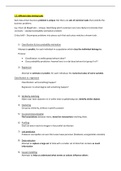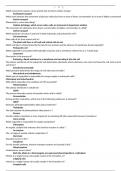Summary
Business Intelligence: Summary of Powerpoints
- Course
- Institution
have put together the powerpoints in a clear way. Contains the learning material of the theory. Handy to go over this document with the document on ufora “learning material to know” and get the useful out of it.
[Show more]







